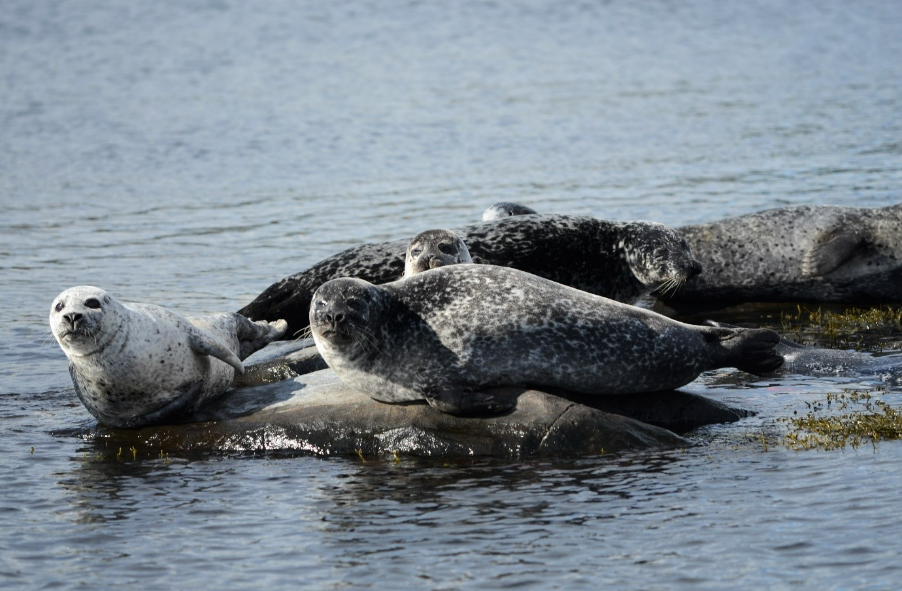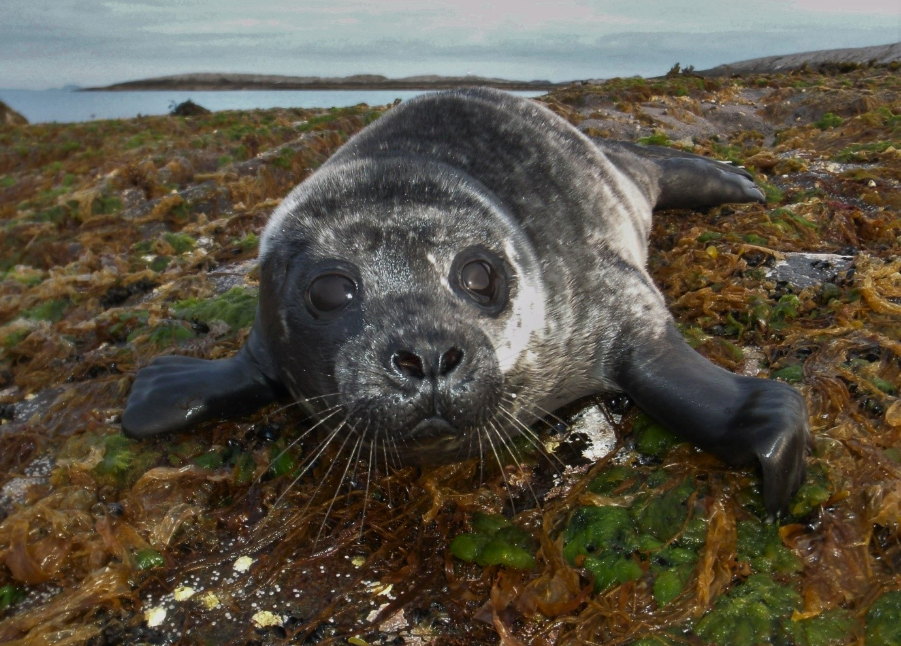Harbour seal
The harbour seal (Phoca vitulina) can be found all along the Norwegian coastline and is the most abundant coastal seal species in Norway. It is the seal species with the widest geographical distribution, and you can find them from California in the south and all the way up to Svalbard/Spitsbergen in the north! They live in colonies that vary in size from a few up to several hundred individuals. Adult harbour seals can be up to about 150 cm long and weigh just over 100 kg. The males are slightly larger than the females. The coat colour varies from light grey to almost black, with light or dark spots. Harbour seals can live up to 30-35 years. Unlike sea lions, harbour seals cannot rotate in the hips and walk on their back flippers. They are therefore quite clumsy on land, stumbling about on their stomachs. They are, on the other hand, very graceful under water.

The harbour seal’s favourite food is fish, preferably shoaling fish. Norway pout, herring, saithe, capelin, sandeel, small cod and haddock, various flatfish and sculpins are among the fish species on the Norwegian harbour seal’s menu. These seals have incredibly sensitive whiskers, and they need neither sight nor hearing to orient themselves or find food under water. They hunt close to shore, and therefore rarely dive deeper than 100 metres. The harbour seal is thus among the seals that dive relatively shallow – there are seal species that can dive deeper than 1500 metres! Seals are mammals, and they therefore need to breathe air like us humans. At the same time, they spend most of their lives in water, and they must be able to hold their breath for a very long time. The shallow-diving harbour seal doesn’t need to hold its breath for more than 20-30 minutes, but there are seal species that can hold their breath for almost 2 hours!

The harbour seal reaches sexual maturity at 4-6 years, and they usually have one pup per year. In Norway, the pups are born in mid-June. Although they are not very good in the start, the harbour seal pups are able to swim almost immediately after birth. Some seal species must fend for themselves after just a few days, while other get a little more time. The harbour seals get to spend 3-4 weeks with their mother. When the females leave the pups, the males are ready to mate. Harbour seal males sing under water to attract females, and the male with the best song gets the girls. After mating season, it is time to moult the fur. During this period, the seals spend most of the time on land, and late summer to early autumn is thus the best time to observe harbour seals.

Harbour seals are among the species that unfortunately get stuck and die in fishing nets. Annually more than 500 harbour seals die in the Norwegian net fishing. Harbour seals are also prone to ghost fishing – fishing gear that is lost and left in the sea. The seals can get stuck and die in nets that drift in the sea. They can also get fishing gear stuck in or tangled around their bodies, eventually leading to deep wounds, pain and major problems for the animal.
Along the Norwegian coast, harbour seals are food for killer whales, Greenland sharks and the grey seal. The harbour seal is in addition an important host in the life cycle of parasitic nematodes. In 2006, the harbour seal was assessed as Vulnerable (VU) on the Norwegian Red List. Changes were made to the hunting quotas, and by 2015 the population had increased enough to remove it from the Red List. The harbour seal population in Skagerrak was greatly reduced after two serious viral epidemics in 1988 and 2002, and it is thus great news that the population has increased here as well.


